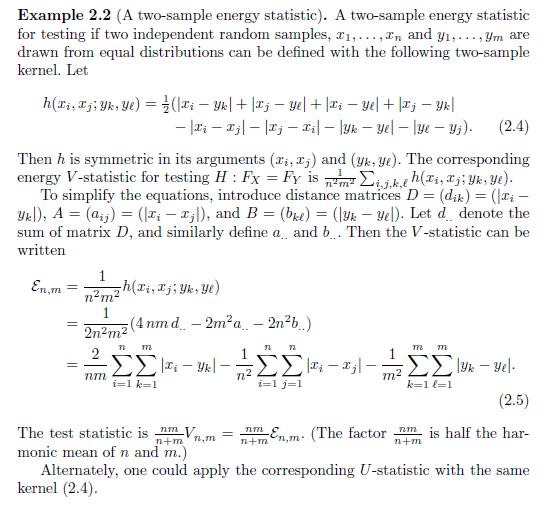In Example 2.2, if (X, Y) are independent and (F_{X}=F_{Y}) then (mathcal{E}(X, Y)=2 E|X-Y|-Eleft|X-X^{prime}ight|-Eleft|Y-Y^{prime}ight|=0). However, the test
Question:
In Example 2.2, if \(X, Y\) are independent and \(F_{X}=F_{Y}\) then \(\mathcal{E}(X, Y)=2 E|X-Y|-E\left|X-X^{\prime}ight|-E\left|Y-Y^{\prime}ight|=0\). However, the test statistic \(\frac{n m}{n+m} V_{n, m}=\frac{n m}{n+m} \mathcal{E}_{n, m}\) is not unbiased for \(\mathcal{E}(X, Y)\). Show that under the null hypothesis, for independent random samples, the bias in the test statistic \(\frac{n m}{n+m} \mathcal{E}_{n, m}\) is
\[
E\left(\frac{n m}{n+m} \mathcal{E}_{n, m}ight)=E|X-Y|
\]
Data From Exercise 2.2

Fantastic news! We've Found the answer you've been seeking!
Step by Step Answer:
Related Book For 

Cases And Materials On Employment Law
ISBN: 9780199580712
8th Edition
Authors: Richard Painter, Ann Holmes
Question Posted:





